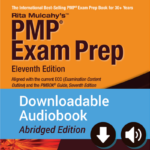The Program Management Improvement and Accountability Act of 2015 (PMIAA) was intended to create a uniform set of standards and guidelines for implementing programs within the federal government. PMIAA also mandated the creation of a career path for program managers. On its face, PMIAA sounds like a great idea, but there may be complications that keep it from achieving the goals sought by Congress. One issue is that PMIAA fails to clearly define a “program.”
In PMIAA’s legislative history, the Senate and House cited a whitepaper sponsored by the Project Management Institute (PMI) and published by the National Academy of Public Administration that adopted PMI’s definition of a program:
A group of related projects, subprograms, and program activities that are managed in a coordinated way to obtain benefits not available from managing them individually. All projects within a program are related by a common goal, often of strategic importance to the sponsoring organization.
Did Congress intend to apply this definition to PMIAA? If so, why did they not simply put that definition in the statute?
It’s possible Congress believes the federal government is too big for a single definition of a program, so they never intended to create one. While mandating a single set of rules and guidelines for program management, PMIAA notes that one size does not fit all. This was recently reiterated in the 2017 version of OMB Circular A-11, which is essentially an instruction manual on how to create a federal budget.
OMB Circular A-11 is broad and even makes a passing reference to PMIAA stating that the Office of Management and Budget (OMB) hasn’t done anything to implement PMIAA but will in the future. Section 200 of OMB Circular A-11 has an ambiguous definition of a program:
Generally, an organized set of activities directed toward a common purpose or goal that an agency undertakes or proposes to carry out its responsibilities. Within this broad definition, agencies and their stakeholders currently use the term “program” in different ways. Agencies have widely varying missions and achieve these missions through different programmatic approaches, so differences in the use of the term “program” are legitimate and meaningful. For this reason, OMB does not prescribe a superseding definition of “program”; rather, consistent with the GPRA Modernization Act, agencies may identify programs consistent with the manner in which the agency uses programs to interact with key stakeholders and to execute its mission.
While there are benefits to a fluid definition of a program, not requiring a consistent definition is problematic.
The Government Accountability Office, in GAO 15-83, criticized OMB for its variable definition of a program. According to the GAO, the failure to adopt a consistent definition of a program makes it harder to budget and audit programs and inhibits cross agency cooperation.
An inconsistent definition of a program will also make it more difficult to implement PMIAA. How can the OMB adopt a single set of consistent program management processes and guidelines applicable to the entire federal government without first creating a clear definition of a program?
The lack of a single definition for a program also creates a massive loophole that allows agencies to narrowly define programs to avoid having to comply with PMIAA.
The first step in any PMIAA implementation should be to follow the advice of the GAO in 83-15 and adopt a single definition for a program. PMI’s definition used by the NAPA whitepaper would be a good starting point, as that definition is both broad and flexible. It is also used extensively in the private sector, which would also meet another directive in the PMIAA—requiring the federal government to engage with the private sector in adopting best practices in program management.
- All New PMP Exam Prep Audiobook-11th Edition - October 17, 2023
- Project Leadership and the PMP - March 19, 2023
- How to Use Rita Mulcahy’s Exam Prep Products for the Project Management Professional (PMP)® Exam - February 15, 2023





